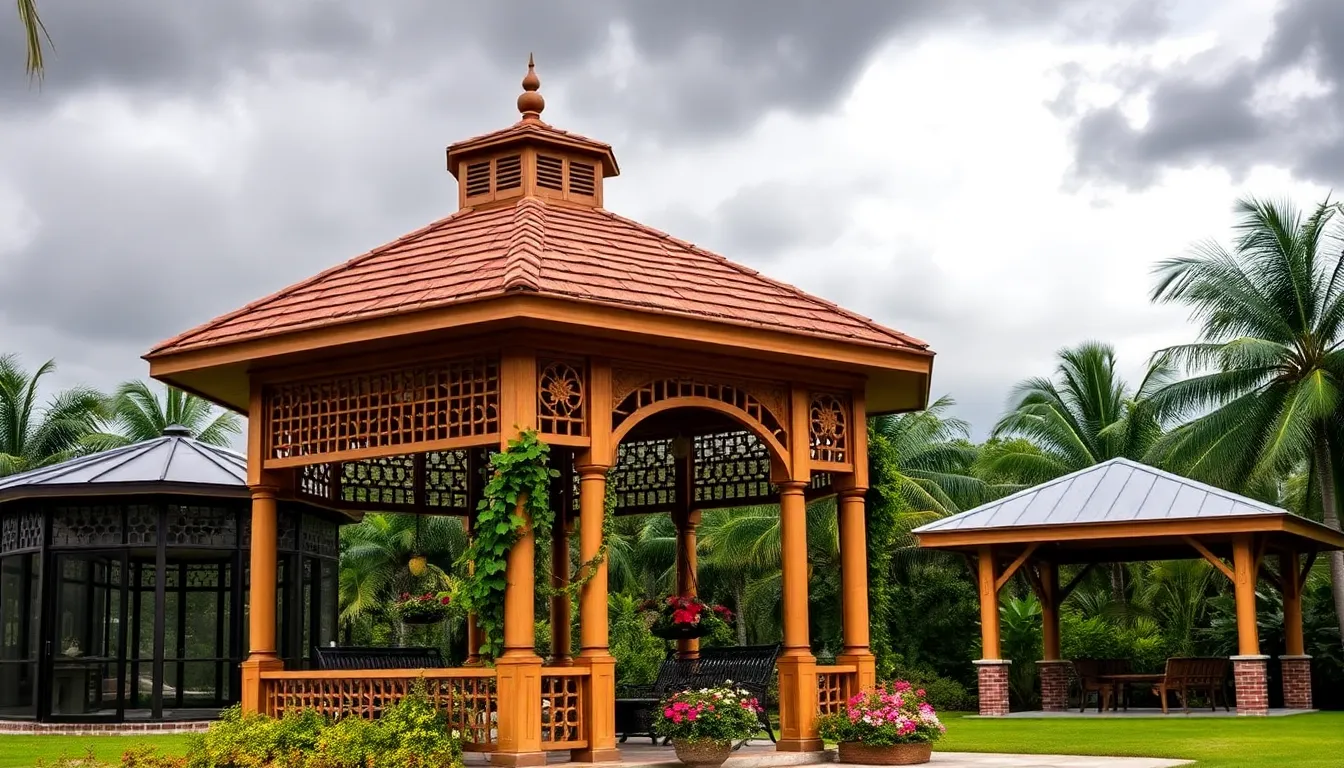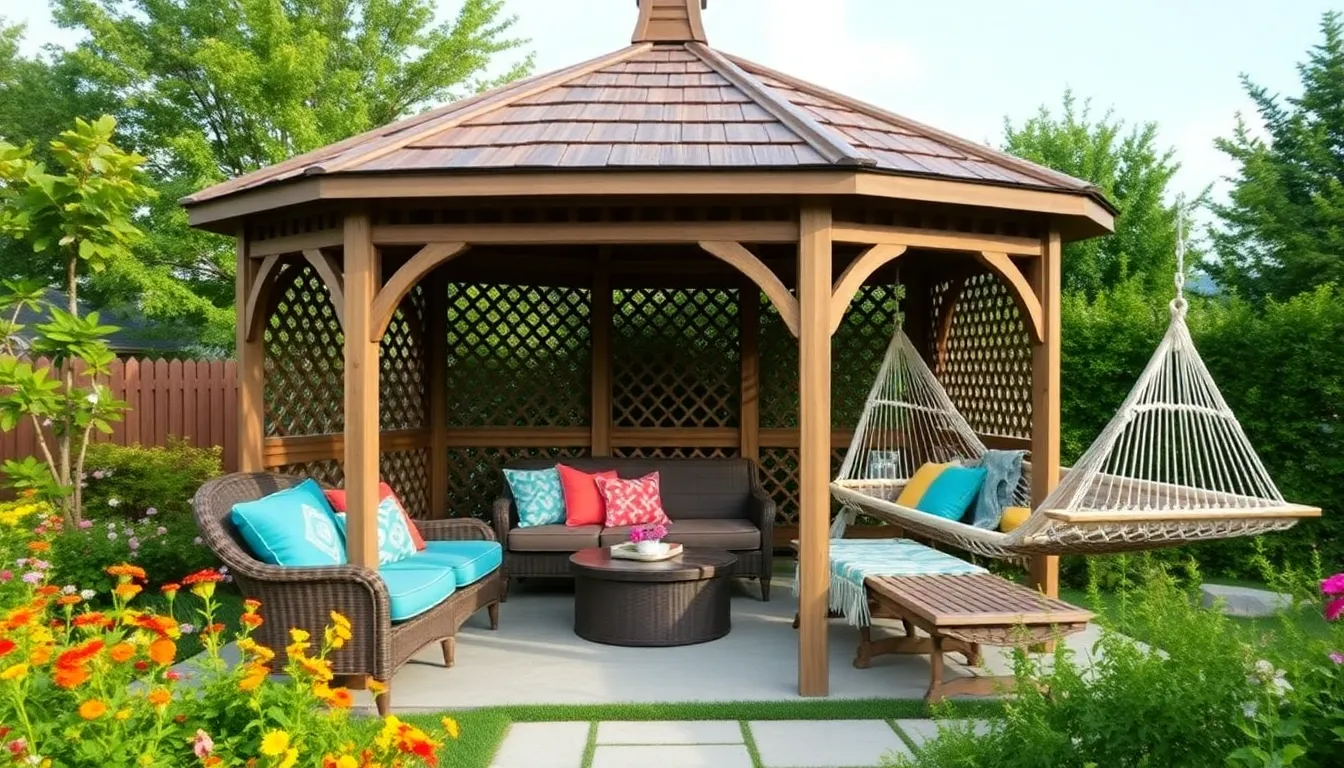Imagine transforming your backyard into an oasis that not only invites relaxation but also stands firm against nature’s fiercest elements. Whether you’re a first-time homeowner eager to enhance your outdoor space or a seasoned pro looking to upgrade, understanding the art of resilient gazebo designs can elevate your alfresco experience. With monsoon seasons becoming increasingly unpredictable, investing in a sturdy, yet stylish, covered gazebo is more important than ever to ensure you enjoy every moment outdoors, rain or shine.
In this article, we’ll explore nine innovative gazebo designs that combine structural integrity with aesthetic appeal, giving you the confidence to create a lasting retreat. From materials that resist the harshest downpours to features that enhance comfort and functionality, you’ll discover practical insights to make informed choices tailored to your needs. So, let’s dive into the world of weather-ready gazebos and find the perfect match for your outdoor haven.
Choosing Durable Gazebo Materials
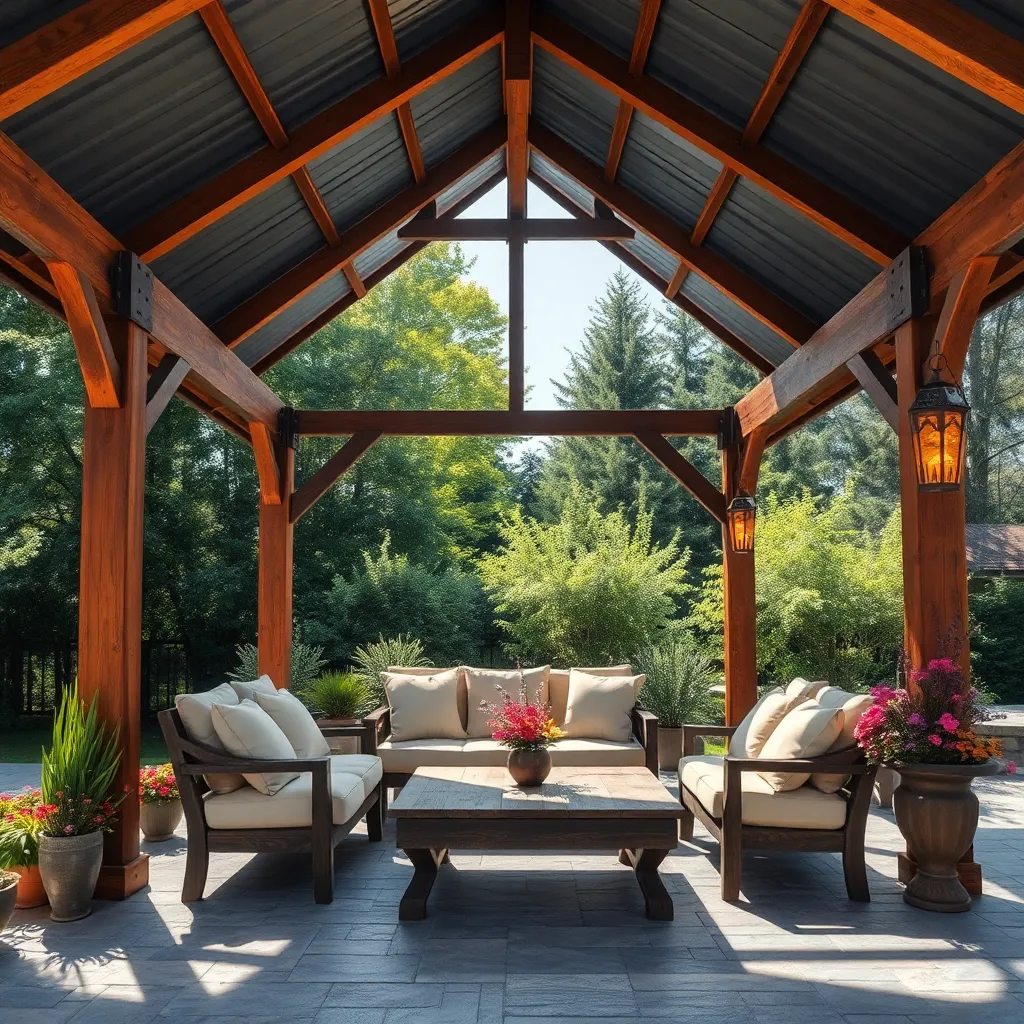
When selecting materials for a gazebo that can withstand monsoon conditions, it’s essential to focus on durability and weather resistance. Opt for pressure-treated wood or cedar, as these are naturally resistant to rot and insects. Additionally, consider using galvanized steel or aluminum for the frame, which offers superior strength and resistance to rust. To further enhance durability, use weather-resistant finishes on wooden components and ensure all joints are tightly sealed to prevent water ingress.
For roofing, consider using polycarbonate panels or heavy-duty canvas with a waterproof coating to protect against heavy rain. Ensure the roof design incorporates a steep pitch to encourage water runoff, reducing the risk of pooling. To add an extra layer of protection, install gutter systems to guide water away from the structure. For those looking to add a touch of elegance while maintaining strength, consider integrating decorative metal brackets which can reinforce the structure while adding aesthetic value.
Designing for Monsoon Durability
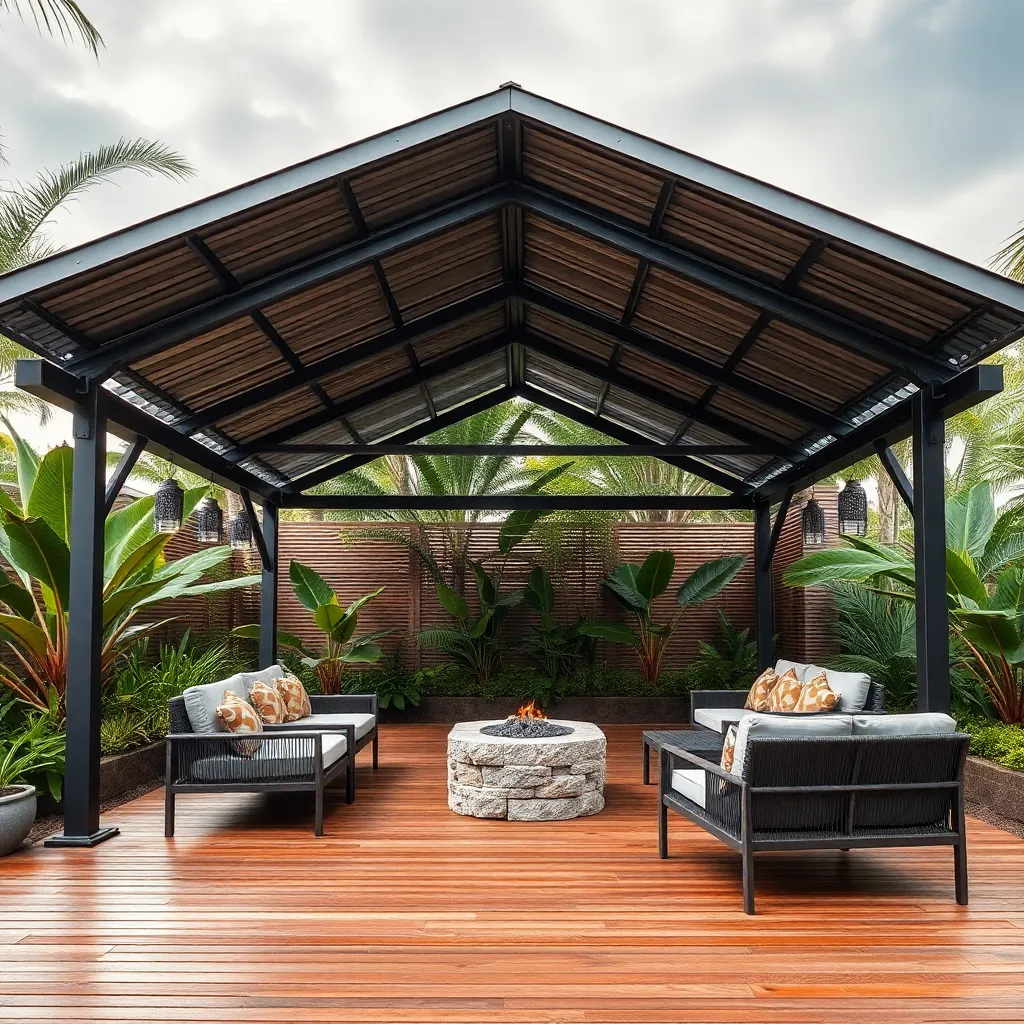
Designing a gazebo for monsoon durability requires careful planning to ensure it withstands heavy rains and strong winds. Start by considering a sloped roof design, which allows water to run off easily, preventing accumulation that can lead to leaks or structural damage. Opt for materials like galvanized steel or treated wood for the frame, as these are resistant to rust and decay. Incorporating drainage systems within the design can also help manage water flow effectively.
For added stability, ensure the gazebo is anchored securely to the ground using concrete footings or screw anchors, especially in areas prone to strong winds. Consider using water-resistant fabrics for any curtains or coverings, such as polyester or acrylic, which offer durability and withstand the elements better than cotton or other natural fibers. For those looking to go a step further, incorporating wind braces or cross-bracing can enhance the structure’s resilience during stormy weather, ensuring your gazebo remains a safe and inviting outdoor retreat season after season.
Waterproofing Techniques for Gazebos
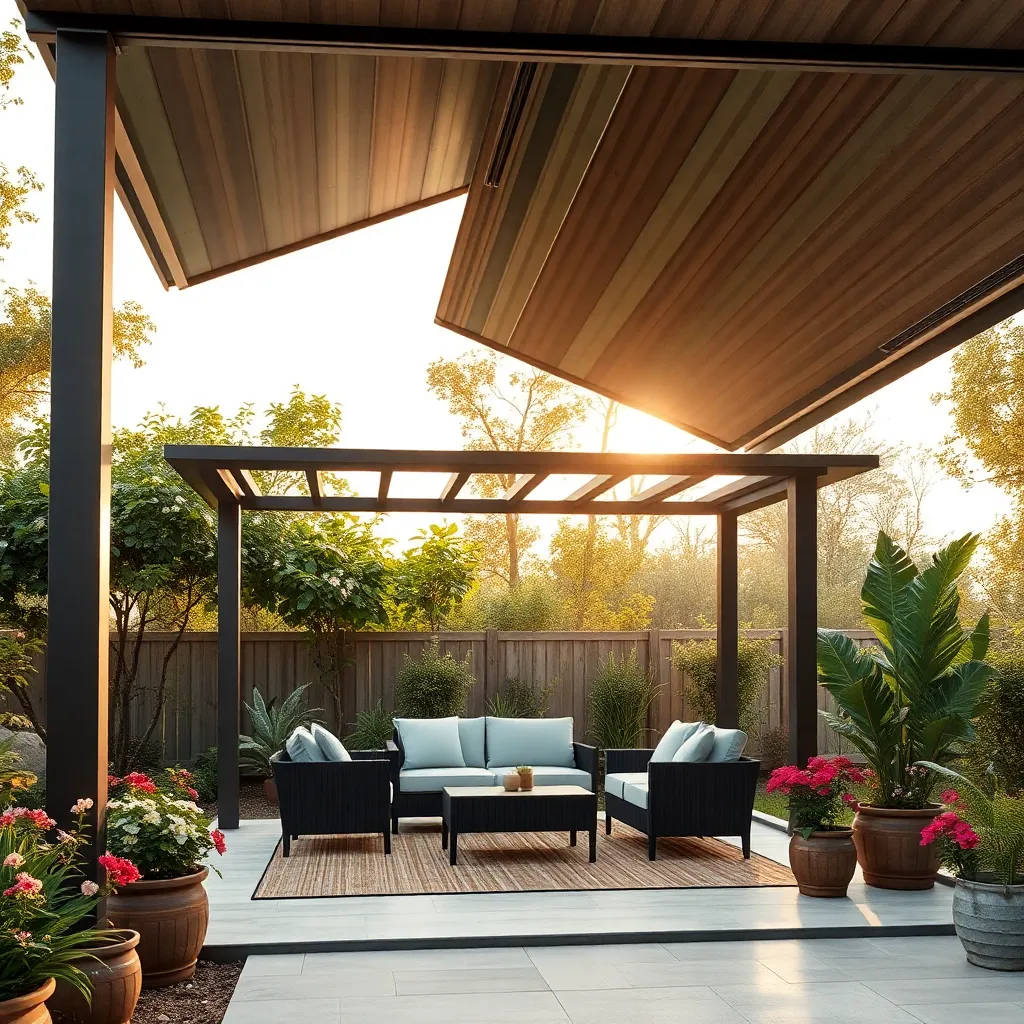
Ensuring that your gazebo is waterproofed effectively is crucial for surviving monsoon conditions. Begin by selecting a high-quality, weather-resistant fabric for the roof, such as polyester with a PVC coating. This material provides excellent water resistance and durability. For the structure, use treated wood or powder-coated metal, which resists moisture-related damage. Additionally, consider installing a pitched roof design to allow rainwater to run off easily, preventing water accumulation.
For added protection, apply a waterproof sealant to all seams and joints, which helps prevent leaks. You can also hang waterproof curtains made from materials like olefin or vinyl, which shield the interior from wind-driven rain. For advanced protection, install a drainage system around the base of the gazebo to redirect water flow away from the structure. These steps not only safeguard your gazebo against monsoon rains but also extend its life, ensuring it remains a functional and beautiful outdoor space.
Sturdy Frame Designs for Stability
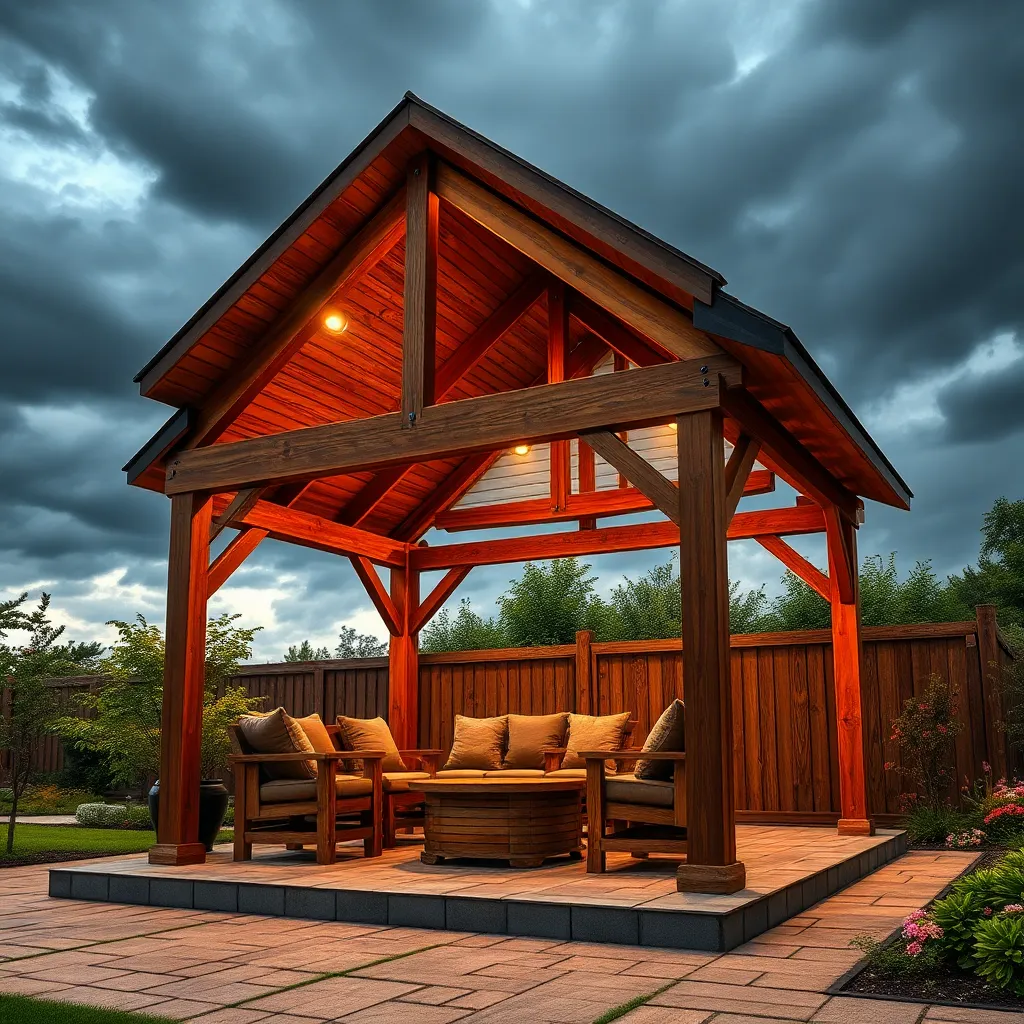
To ensure your gazebo withstands the harsh conditions of monsoon season, it is crucial to focus on a sturdy frame design. Opt for materials like galvanized steel or aluminum, which offer both durability and resistance to rust. Consider a hexagonal or octagonal shape, as these designs provide excellent stability and can handle high winds better than square or rectangular structures. These shapes distribute the wind pressure evenly, preventing any single point from bearing too much stress.
For added reinforcement, integrate cross-bracing into your design, especially in areas prone to severe weather. Cross-bracing involves installing diagonal supports that connect opposite corners, significantly strengthening the frame. Use bolts rather than nails for joints to ensure a more secure connection, and consider footings that extend below the frost line to prevent shifting. By combining these techniques, your gazebo will not only survive the monsoon season but also provide a reliable and aesthetically pleasing outdoor space year-round.
Ventilation Options for Humid Climates
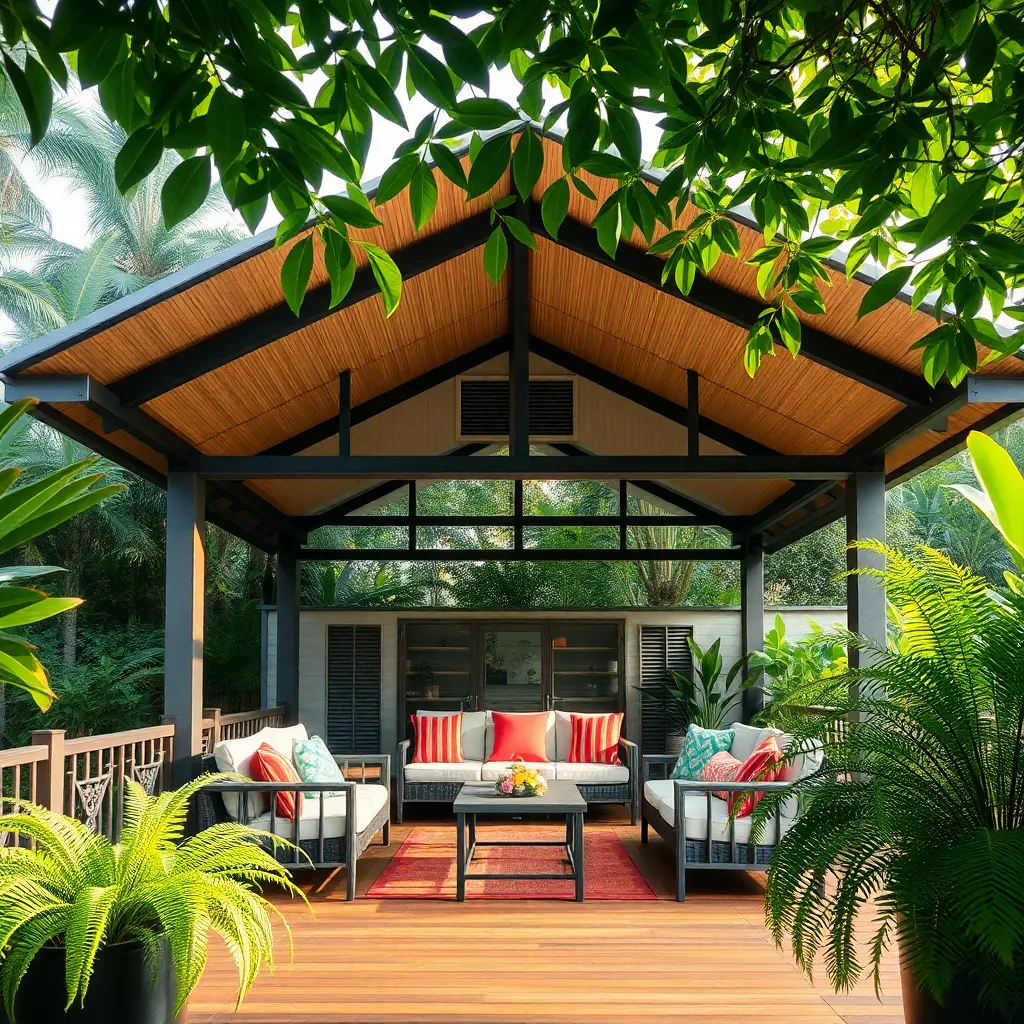
In humid climates, ensuring proper ventilation in your gazebo is crucial to prevent dampness and mildew. **Louvered roof panels** are an excellent choice as they allow for adjustable airflow while providing shelter from the rain. Opt for materials like **high-quality aluminum** or **weather-resistant wood**, which can withstand moisture without warping. For more advanced setups, consider installing **motorized louver systems** that can be controlled via remote or smartphone, allowing you to adjust ventilation easily in response to changing weather conditions.
Incorporating **side panels with mesh screens** can also enhance ventilation while keeping insects at bay. Choose **breathable fabric panels** that can be rolled up or tied back when not in use, providing flexibility and control over airflow. For added durability, **stainless steel hardware** is recommended, as it resists rust and corrosion. These design elements not only improve air circulation but also enhance your gazebo’s overall comfort and usability, making it a more enjoyable space during humid monsoon seasons.
Integrating Drainage Solutions Effectively
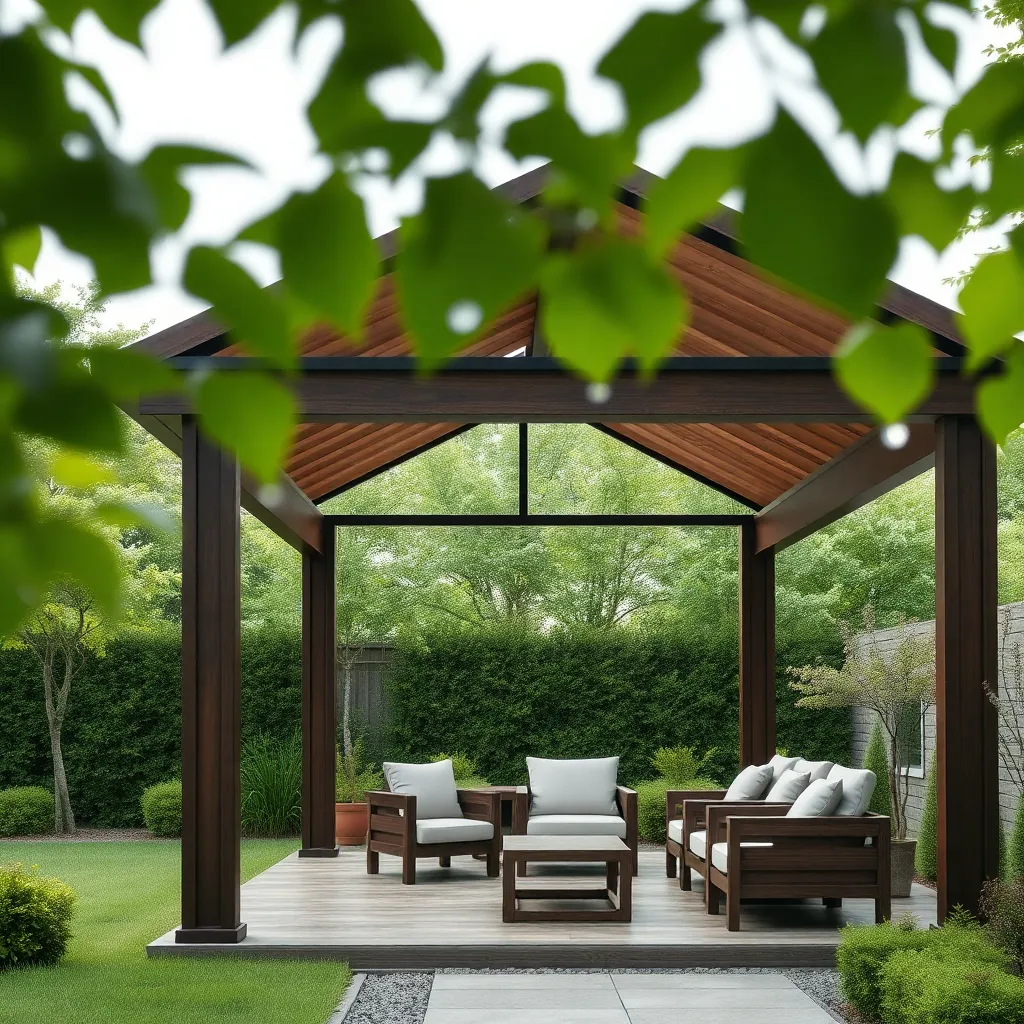
To ensure your gazebo withstands monsoon conditions, integrating effective drainage solutions is crucial. Start by designing a slight slope in the ground beneath the gazebo, directing water away from the structure to prevent pooling. Installing a gutter system along the roof edges is an advanced solution that channels rainwater efficiently. Opt for corrosion-resistant materials like aluminum or vinyl for long-lasting performance, and ensure downspouts direct water at least 10 feet away from the foundation.
For added protection, consider using permeable pavers around the gazebo perimeter to facilitate water seepage into the ground, reducing surface runoff. Gravel beds can also be strategically placed to enhance drainage, especially in areas prone to heavy rainfall. Beginners can start with basic measures like checking local building codes for any specific drainage considerations, while more experienced DIYers might install a French drain system for comprehensive water management. These solutions not only protect your gazebo but also maintain the surrounding landscape’s integrity.
Enhancing Wind Resistance Features
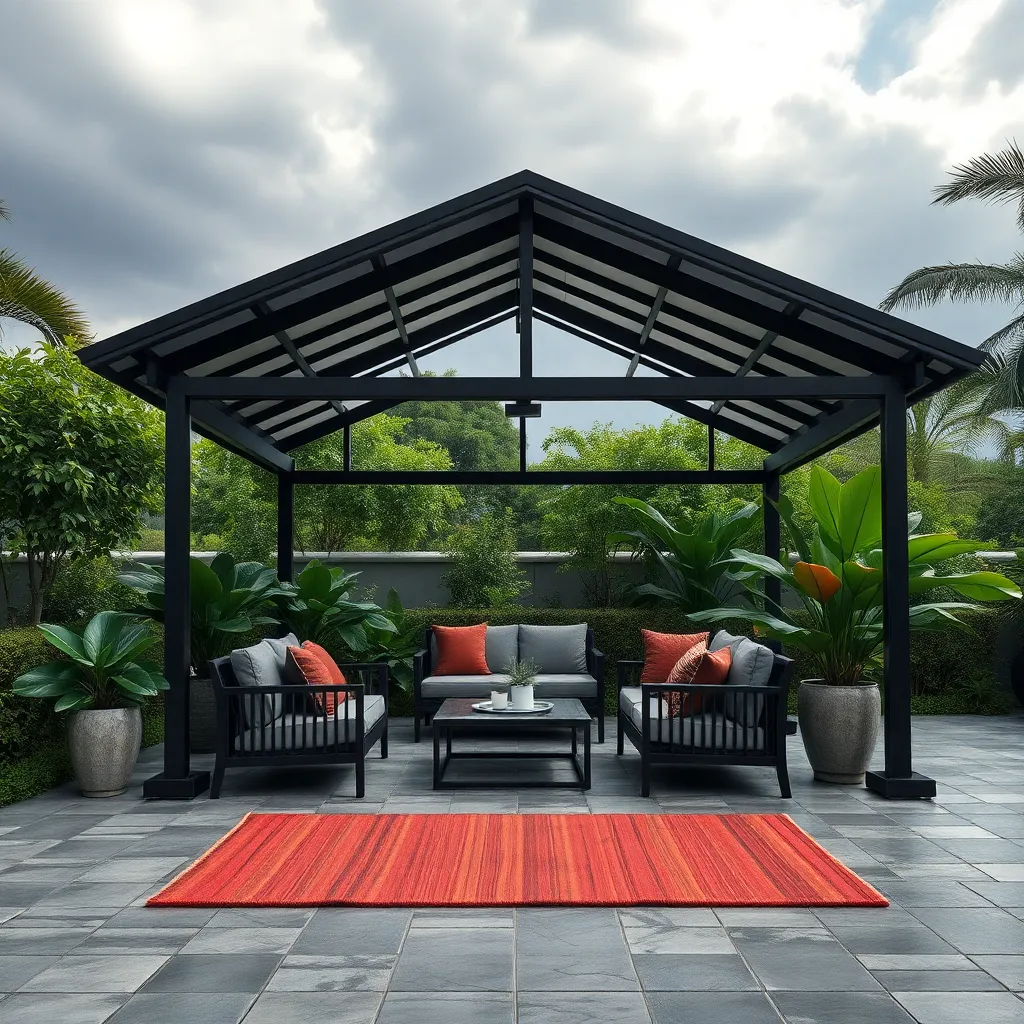
To enhance the wind resistance of your gazebo, consider using heavy-duty materials like steel or reinforced aluminum for the frame. These materials provide a sturdy backbone against strong winds. Additionally, opting for a low-profile roof design, such as a hip or pyramid style, can help deflect wind rather than catching it, reducing the risk of structural damage during monsoons.
For added stability, incorporate anchor kits that secure your gazebo to the ground more effectively. Use
- concrete footings
- ground anchors
- heavy-duty stakes
to firmly hold the structure in place. For advanced wind resistance, consider installing windbreaks, like strategically placed lattice walls or outdoor curtains, which can diffuse wind power before it hits the gazebo directly. These features not only strengthen your gazebo’s resilience but also enhance its aesthetic appeal, making it both practical and beautiful.
Incorporating Anti-Corrosion Treatments
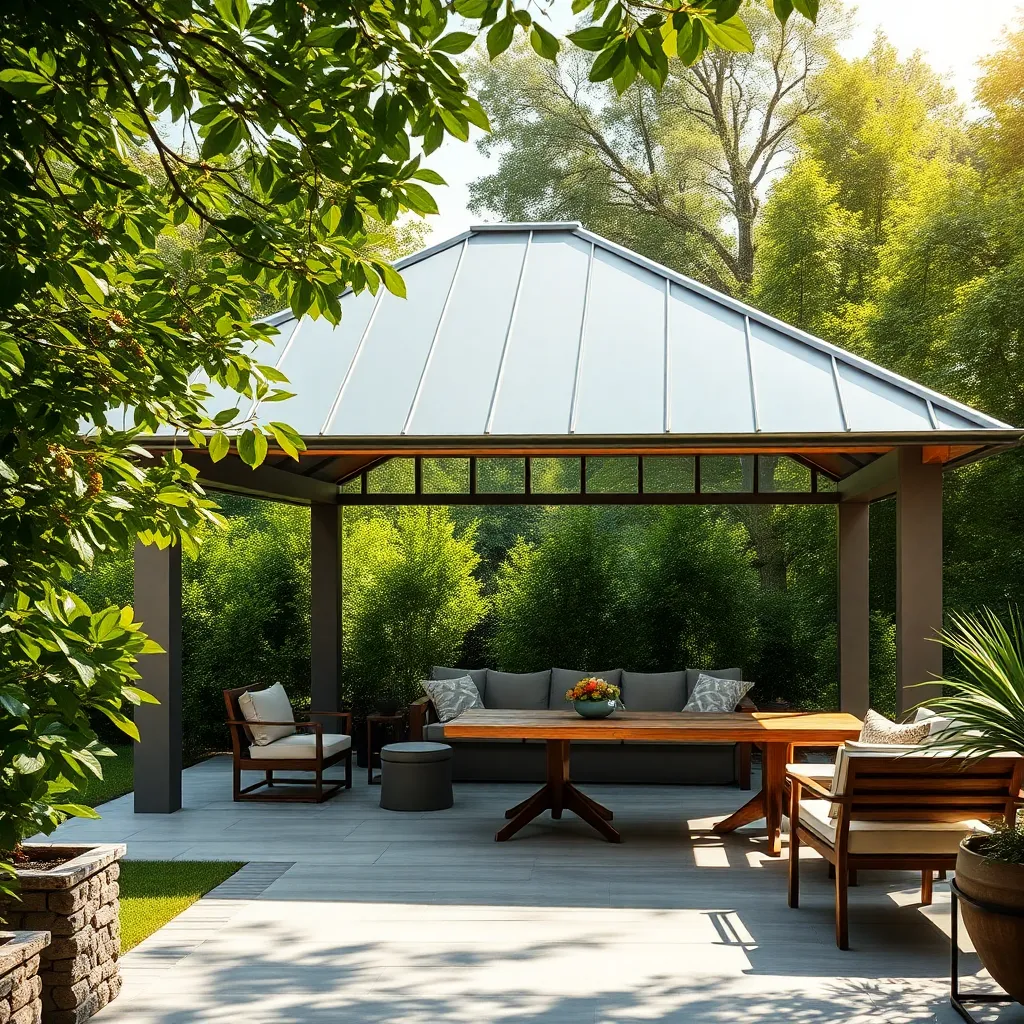
When designing a gazebo to withstand the monsoon season, incorporating anti-corrosion treatments is essential to ensure its longevity. Start by choosing materials like galvanized steel or powder-coated aluminum, which are naturally resistant to rust and corrosion. Applying a protective sealant to wooden components can further guard against moisture damage, keeping your structure looking pristine for years.
For a more advanced approach, consider using stainless steel hardware for joints and fasteners, as it offers superior resistance to harsh weather conditions. Regular maintenance, such as inspecting and reapplying protective coatings, can significantly extend the life of your gazebo. By selecting the right materials and treatments, you’ll create a durable outdoor shelter that’s both beautiful and built to last through any storm.
Maximizing Longevity with Smart Maintenance

Regular maintenance is crucial to ensure your gazebo withstands harsh monsoon conditions year after year. Begin by inspecting the structure for any signs of wear or damage, such as rust on metal parts or rot in wooden components. Use a sealant on wood surfaces to repel water, and apply a rust-resistant paint to metal frames every year. This not only extends the life of your gazebo but also keeps it looking fresh and inviting.
For advanced upkeep, consider integrating removable side panels or curtains, which offer additional protection during storms and can be easily stored when not needed. Ensure that the roof is slightly sloped to allow water runoff and prevent pooling, which can cause damage over time. Regularly clean debris from the roof to maintain its integrity, and tighten any loose bolts or screws to keep the structure stable. These proactive measures will help your gazebo remain a resilient outdoor feature.
Conclusion: Creating Beautiful Outdoor Spaces
In navigating the stormy seasons of relationships, just like the resilient gazebo designs that withstand monsoons, there are foundational concepts that help relationships flourish under pressure. We’ve explored the importance of open communication, the strength of trust, the beauty of shared goals, and the shelter of mutual respect. We’ve touched on the significance of maintaining individuality, the support of empathy, the necessity of conflict resolution, the joy of shared experiences, and the grounding of gratitude.
To fortify your relationship against life’s inevitable storms, start by choosing one concept to focus on this week. Whether it’s enhancing communication or cultivating gratitude, take actionable steps to strengthen this area with your partner.
Remember, the journey to a thriving relationship is ongoing. Bookmark this article as a handy guide to revisit and reinforce these crucial principles. Doing so will not only serve as a reminder of the proactive steps you can take but also inspire continuous growth.
As you invest in these practices, envision a future where your relationship stands strong and unwavering, capable of weathering any challenge. Your commitment today is a cornerstone for lasting success. Save this guide now and let it be your companion in nurturing a love that endures.

